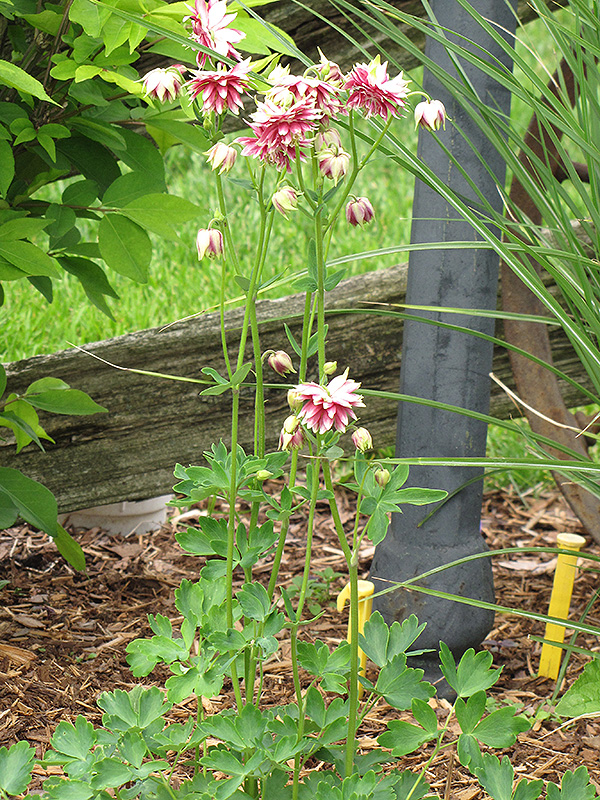Find Plants
Nora Barlow Columbine*
Aquilegia vulgaris 'Nora Barlow'
* This is a "special order" plant - contact store for details
Plant Height: 18 inches
Flower Height: 24 inches
Spread: 18 inches
Sunlight:
![]()
![]()
![]()
Hardiness Zone: 2
Other Names: Clematis-flowered Columbine, var. stellata
Description:
Unique and pretty pink double flowers, looks like small dahlias rather than columbine; Nora Barlow is named for Charles Darwin's granddaughter; long lasting as cutflowers, will naturalize in shaded areas
Ornamental Features
Nora Barlow Columbine features dainty nodding pink ball-shaped flowers with white edges at the ends of the stems from late spring to early summer. The flowers are excellent for cutting. Its ferny compound leaves remain bluish-green in color throughout the season.
Landscape Attributes
Nora Barlow Columbine is an herbaceous perennial with an upright spreading habit of growth. Its relatively fine texture sets it apart from other garden plants with less refined foliage.
This is a relatively low maintenance plant, and should be cut back in late fall in preparation for winter. Deer don't particularly care for this plant and will usually leave it alone in favor of tastier treats. Gardeners should be aware of the following characteristic(s) that may warrant special consideration;
- Insects
Nora Barlow Columbine is recommended for the following landscape applications;
- Mass Planting
- Rock/Alpine Gardens
- Border Edging
- General Garden Use
- Groundcover
- Naturalizing And Woodland Gardens
- Container Planting
Planting & Growing
Nora Barlow Columbine will grow to be about 18 inches tall at maturity extending to 24 inches tall with the flowers, with a spread of 18 inches. Its foliage tends to remain dense right to the ground, not requiring facer plants in front. It grows at a medium rate, and under ideal conditions can be expected to live for approximately 5 years. As an herbaceous perennial, this plant will usually die back to the crown each winter, and will regrow from the base each spring. Be careful not to disturb the crown in late winter when it may not be readily seen!
This plant performs well in both full sun and full shade. It does best in average to evenly moist conditions, but will not tolerate standing water. It is not particular as to soil type or pH. It is somewhat tolerant of urban pollution. This is a selected variety of a species not originally from North America.
Nora Barlow Columbine is a fine choice for the garden, but it is also a good selection for planting in outdoor pots and containers. With its upright habit of growth, it is best suited for use as a 'thriller' in the 'spiller-thriller-filler' container combination; plant it near the center of the pot, surrounded by smaller plants and those that spill over the edges. Note that when growing plants in outdoor containers and baskets, they may require more frequent waterings than they would in the yard or garden.
* This is a "special order" plant - contact store for details
Disclaimer - This Plant Finder tool is an online resource representing many of the varieties that we carry over the course of the season, and is intended for informational purposes only. Inventory varies seasonally, so we cannot guarantee that every plant will be in stock at all times - please contact the store directly for availability. It does not include our entire inventory of plants, so be sure to visit our store to see varieties that may not be represented on this list.


